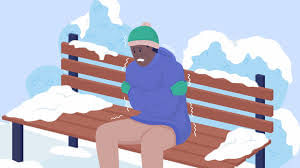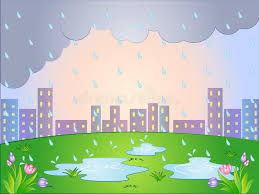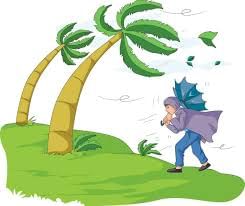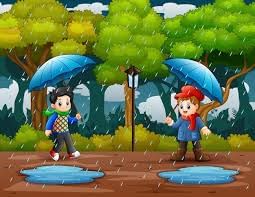Seasons and Weather Chapter Notes | EVS for Class 2 PDF Download
| Table of contents |

|
| What is Weather? |

|
| Types of Weather |

|
| Seasons |

|
| Summary |

|
What is Weather?
Weather is what the sky and air are like outside. It can be sunny, cloudy, windy, rainy, or cold. What we wear, eat, and do can change depending on the weather outside.
Types of Weather
1. Sunny Days
Sunny days occur when the sun is shining brightly in the sky. During these days, the weather feels warm and nice, making it a great time for activities outside, such as playing, going for a walk, or having a picnic.

- On sunny days, it's common to:
- Wear light and comfortable cotton clothes to stay cool.
- Enjoy cold drinks and ice creams to beat the heat.
2. Cold Days
Cold days are when it feels chilly outside. You might see frost or snow, depending on where you live. It's a time to wear warm clothes like sweaters and coats, and maybe enjoy some hot chocolate or soup to stay cozy.

- Woolen Clothes: When it's cold, wear warm woolen clothes to keep yourself cozy.
- Hot Drinks and Snacks: Enjoy hot beverages like tea, coffee, and soup, along with warm snacks.
- Quilts and Heaters: Use quilts and heaters to stay warm indoors during very cold days.
3. Rainy Days
Rainy days are when it rains a lot. The sky gets cloudy, and water falls from the clouds. It's a good time to stay indoors, listen to the sound of rain, and maybe even splash in puddles if it's safe.

- Rain Gear: Wear raincoats or carry umbrellas to protect yourself from rain.
- Going Out: It can be difficult to go outside when it's pouring heavily.
- Rainbows: Rainbows form when sunlight shines through water droplets in the air.
4. Windy Days
Windy days are when there's a lot of wind blowing around. You might see trees swaying and hear the sound of the wind rushing by. It's fun to fly kites or watch the leaves dance in the breeze.

- Strong Winds: On windy days, the wind blows quickly and can carry things away.
- Staying Indoors: It's best to stay inside with doors and windows closed during windy weather. Avoid flying kites near power lines for safety.
Seasons
Seasons refer to different times of the year, each characterized by its own distinct weather conditions. In India, there are four primary seasons: Summer, Monsoon, Autumn, and Winter. Each of these seasons brings with it a unique set of weather experiences.
1. Summer
- During the summer season, people generally opt for light and breathable clothing to stay comfortable in the heat.
- To cope with the high temperatures, it is common for individuals to seek ways to cool down, such as by drinking cold beverages or staying indoors during the hottest parts of the day.

2. Winter
- In India, winter is especially chilly in the northern parts of the country.
- During this season, people commonly wear sweaters and jackets to stay warm.
- Winter is also a popular time for enjoying hot beverages such as tea and coffee.

3. Spring
- Spring marks the time when nature stirs awake from its winter slumber.
- During this season, flowers start to bloom, and trees begin to sprout fresh leaves.
- The weather in spring is usually mild and pleasant, falling between the extremes of hot and cold.

4. Monsoon
- The monsoon season in India spans from June to September.
- This period is characterized by heavy rainfall, which is crucial for farmers as it provides the necessary water for crops.
- However, the intense rainfall can also lead to flooding in certain areas.
- To protect themselves from the rain, people often use umbrellas or raincoats.

5. Autumn
Overview:
- Autumn is one of the four seasons in India.
- This season is characterized by windy weather.
- During autumn, leaves start to fall from the trees.

Characteristics:
- In autumn, the weather begins to cool down after the hot summer months.
- Trees shed their leaves, which change to vibrant colours like red, yellow, and orange.
- Autumn is a great time for outdoor activities such as picnics and nature walks.
Summary
- Weather is the condition of the sky and air at a particular time.
- Sunny days are warm and bright.
- Cold days are chilly and require warm clothing.
- Rainy days are cloudy with rain.
- Windy days have strong winds.
- Seasons in India include Summer, Winter, Spring, Monsoon, and Autumn.
|
30 videos|304 docs|48 tests
|
FAQs on Seasons and Weather Chapter Notes - EVS for Class 2
| 1. What is weather and how is it different from climate? |  |
| 2. What are the different types of weather phenomena? |  |
| 3. How do seasons affect weather patterns? |  |
| 4. What are some common indicators of upcoming weather changes? |  |
| 5. Why is studying weather important for daily life? |  |















